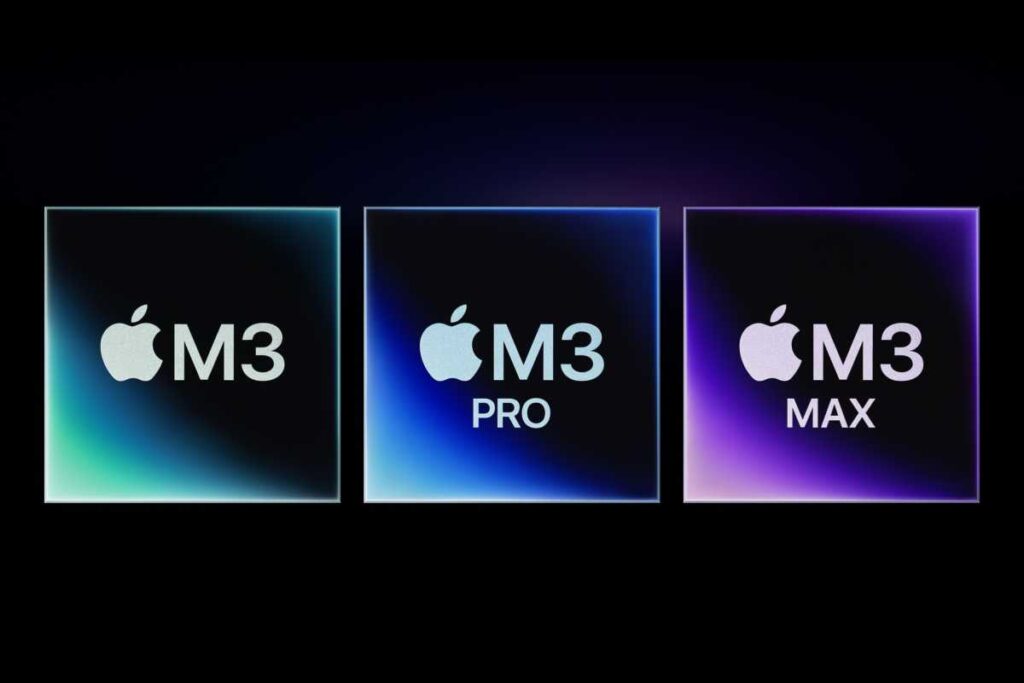How much MacBook do you really need?

With the MacBook Air and MacBook Pro, Apple offers standard configurations to make it easy to pick a laptop. They seem straightforward, but if you start to think about all the things you do on a Mac–whether you’re a student or a professional–you can start to wonder about which model to choose and maybe even find it difficult to decide.
It’s a decision you don’t want to take lightly. You’re investing a considerable amount of money, and you don’t want to end up with a Mac that isn’t up to the task or a Mac that has more than you need.
This guide was created to help shoppers figure out what to look for when buying a MacBook. We’ll cover the main components you need to consider: the CPU, the GPU, the amount of unified memory (RAM), the SSD, the display, the battery, and the ports. We’ll go over what your use case may be, and which component configurations would work best to help you get the most bang for your buck.
The M System on a Chip overview: CPU, GPU, unified memory, SSD
Let’s first start with a brief overview of the heart of every Mac: the M System on a Chip. It’s called a System on a Chip (SoC, or just “chip”) because, unlike past chips, it has more than just a CPU that does the main job of processing work. It also houses the graphics processors (GPUs), the unified memory (a combination of CPU and GPU RAM), and the SSD for file storage. In the past, these were all separate components.
Apple 13-inch MacBook Air (M3, 256GB/16GB RAM, 2024)
Price When Reviewed:
$1,099
Apple 15-inch MacBook Air (M3, 256GB/16GB RAM, 2024)
Price When Reviewed:
$1,299
A benefit of having all these components under one unified part is that it helps with performance and power efficiency. A drawback is that the user cannot upgrade the components after purchase. So, it’s even more important than before to carefully consider the specifications you need for what you do.
CPU: Processing cores and how many you should get
The Central Processing Unit (CPU) is the main data processing component and is divided into processing cores. There are two types of cores, which Apple divides into performance and efficiency cores. Generally, the more cores in a CPU, the faster the processing speed.
Apple currently offers five CPU models in its MacBooks: the M2, M3, M4, M4 Pro, and M4 Max. The M2 and M3 has the lowest CPU core count, while the M4 Max has the highest. Which one is right for you? Let’s break it down based on tasks.
M2 (8-core CPU with 4 performance and 4 efficiency cores): a good chip for everyday usage and can handle tasks in media editing apps.
M3 (8-core CPU with 4 performance and 4 efficiency cores): you do the usual everyday tasks and work, which includes web browsing, light productivity apps (Pages, Numbers, Keynote, Microsoft Office), media streaming, light gaming, easy media production (iMovie, GarageBand).
M4 (10-core CPU with 4 performance and 6 efficiency cores): a lot like the M3, but a bit faster.
M4 Pro (12- or 14-core CPU with 8 or 10 performance cores and 4 efficiency cores): you are regularly performing work that’s a bit more in-depth, such as complex Excel spreadsheets, multi-layer image editing, and creation in Photoshop or other graphics apps, production of video and audio shorts, databases, serious gaming.
M4 Max (14- or 16-core CPU with 10 or 12 performance cores and 4 efficiency cores): you make a living as a media producer (Final Cut Pro, Logic Pro, Autodesk Maya, etc.), software developer, or any other work that requires multitasking and long hours with heavy work.
Keep in mind that the base M4 is robust enough to handle the tasks that the M4 Max is designed for–it just takes longer to finish. If you only occasionally need to do those high-end jobs or you’re learning how to do them, you can live with the M4.
The M3 and M3 chips offer different CPU, GPU, memory, and SSD configurations.
Macworld.se
GPU: Graphics processing power
The GPU (graphics processing unit) is primarily used for rendering graphics and video on the screen. However, because GPUs offer parallel processing, a GPU can be used for other jobs, including AI, though the NPU (which is the same across all MacBooks) handles much of that workload.
As with the CPU, the GPU has processing cores, and the more cores, the better the performance. Apple partners the increase of CPU cores along with the increase of GPU cores, so you don’t have to worry about, say, getting a M3 Pro chip with not enough CPU cores. Which one is right for you? Let’s break it down based on tasks.
M2 (8-core CPU): capable of everyday tasks and casual games.
M3 (8- or 10-core GPU): general tasks and everyday work, media streaming, easy media production, light gaming.
M4 (10-core GPU): like the M3, general tasks and everyday work, media streaming, easy media production, light gaming.
M4 Pro (16- or 20-core GPU): moderate to serious media production and gaming.
M4 Max (32- or 40-core GPU): professional-level media production and hard-core gaming.
Apple 14-inch MacBook Pro (M4)
Price When Reviewed:
$1,599 | $1,799 | $1,999
Read our full
Apple 14-inch MacBook Pro (M4) review
Apple 14-inch MacBook Pro (M4 Pro)
Price When Reviewed:
$1,999 | $2,399
14-inch MacBook Pro (M4 Max)
Price When Reviewed:
$3,199
Unified memory: More RAM is always better
Apple’s M chips use unified memory, which is where the chip reads and writes the data it is working on. It’s called “unified memory” because it’s used by both the CPU and GPU. It’s often referred to as RAM (random access memory). (Traditionally, “RAM” referred to the memory used by the CPU only, and the GPU used video RAM or VRAM).
Each M-series chip comes with a standard configuration of unified memory. Here are the standard memory configurations Apple offers and where you may want to upgrade.
16GB: Good enough if you’re doing general productivity work, internet access media streaming, and easy media production.
24GB or 32GB: Nice amount for moderate media production, graphic work, podcasting, and gaming. Even for people who don’t do processor-intensive work, this is a better fit.
Above 32GB: Professional-level graphics and media production, software development, hardcore gaming.
Remember, you can’t add RAM later, so make sure you consider spending a little more to customize your Mac at purchase. For example, the M3’s standard configuration is 16GB, but an option for 24GB is available for $200. It’s not cheap, but we recommend getting as much memory as you can afford. You can’t go wrong with opting for more memory than the standard configuration–it helps with performance.
When Apple originally introduced the MacBook Air in March 2024, the standard configurations came with 8GB of RAM. When Apple introduced the M4 series of MacBook Pro in October 2024, it increased the base standard configuration to 16GB. The MacBook Air also got the boost without a price increase. So, now all MacBooks have a minimum of 16GB of RAM with some standard configurations that have more.
SSD: file storage
The Mac uses a solid-state drive (SSD) to store your files, apps, and other data. But in addition to data storage, the SSD can play a role in a Mac’s performance. The larger the capacity, the better the performance, mostly in instances that involve very large files.
The higher the SSD capacity, the more NAND chips Apple uses. The more chips in use, the faster the performance, because the data can be accessed in parallel. For example, a 10GB file saved over four SSD chips is faster than the same file saved over two SSD chips. For smaller files used by most people, the difference is still there but isn’t noticeable.
So there are two considerations for the SSD size: How much room you need, and how big are the files you create. With that in mind, here are some recommendations.
256GB: General productivity work, internet access media streaming, and easy media production.
512GB: Frequent work in iMovie, GarageBand, and other consumer-level media production apps.
1TB or more: Professional media production in apps such as Final Cut Pro, Logic Pro, Compressor, etc., software development, graphics.
These considerations don’t involve photos that can accumulate quickly and take up a lot of space or the Photos app. If you like having local access to your photos, consider an external storage device.
This also doesn’t consider cloud storage, such as iCloud, Dropbox, Google Drive, and other services. You don’t want to work directly on files in cloud storage because it’s not an efficient way to work. But cloud storage is a viable way to manage the space on an SSD–you can move files you won’t need immediately to the cloud.
The MacBook Air (left) has an LED display,. while the MacBook Pro (right) has a Mini LED screen.
Foundry
Display: Looks are everything
Apple uses different display technology for the MacBook Air and MacBook Pro. The Air uses a tech that’s more affordable to implement, and it looks good, but it doesn’t look as good as the tech used for the MacBook Pro. Of course, you’ll pay more for the better Pro quality. Here are the two display technologies and who they are suited for.
LED (MacBook Air): General-purpose use, but it can also handle consumer-level video and photo editing that you would do in apps such as Photos, Adobe Photoshop Elements, iMovie, etc. Also good for steaming videos from YouTube, Apple TV+, Netflix, etc., and moderate gaming.
Mini LED (MacBook Pro): Serious video and photo editing and graphics work in pro-level apps (Final Cut Pro, Adobe Photoshop, etc.) where color and detail are important.
Apple 16-inch MacBook Pro (M4 Pro)
Price When Reviewed:
$2,499 | $2,899
Read our full
Apple 16-inch MacBook Pro (M4 Pro) review
Apple 16-inch MacBook Pro (M4 Max)
Price When Reviewed:
$3,499 | $3,999
Battery life: All-day work
The MacBooks offer excellent battery life that will last all day long. However, the different chips affect the duration because a chip that offers more processing prowess requires more battery power. There are also lots of considerations to think about regarding your specific use case. Here’s a look at how the different MacBooks compare and our recommendations.
M3 MacBook Air: Apple cites the same battery life numbers for both the 13- and 15-inch models since both laptops have a 52.6-watt-hour battery (up to 18 hours), though you’ll probably get a little more battery with the 13-inch model due to the smaller screen. Either way, that’s the battery is long enough to last a whole day doing general-purpose work, access the internet, and work in Pages, Keynote, or Microsoft Office. You can even do light media work in iMovie or GarageBand, but heavier jobs will tax the battery.
M4, M4 Pro/Max MacBook Pro: The 14-inch MacBook Pro has a 72.4-watt-hour battery; the M4 can last up to 24 hours, while the M4 Pro/Max lasts up to 22/18 hours. The 16-inch MacBook Pro is rated at 100-watt-hours, and the M4 Pro can last up to 24 hours, while the M4 Max lasts 21 hours.
Since the Pro laptops are bigger than the Air, the battery is bigger. If you’re doing production-type work while on location and you can’t plug in, the Pro is the one to get, even if it’s bigger/heavier than the Air.
Ports: Making connections
All of Apple’s MacBooks have Thunderbolt/USB 4 ports, a MagSafe port, and a 3.5mm audio jack. But that’s where the commonality ends. Here’s what you need to know.
MacBook Air: Two Thunderbolt/USB 4 ports. That’s because the Air is meant to serve primarily as a travel buddy in situations when you aren’t connecting too many devices–maybe an external Thunderbolt/USB-C display for presentations, or a drive to save/transfer files. The Thunderbolt ports conform to the Thunderbolt 3 specification, and while its fast, it is the slowest of the MacBooks.
MacBook Pro: As a mobile desktop device, the MacBook Pros have an HDMI port for connecting an external display and an SDXC Card slot for file transfers from a camera or other device. All MacBook Pro models have three Thunderbolt/USB-C ports. However, laptops with the M4 chip have the Thunderbolt 4 implementation, while the M4 Pro and M4 Max chips support Thunderbolt 5, which is the fastest specification.
The MacBook Pro has an SDXC Card slot (far left) and HDMI port (far right), which are not on the MacBook Air.
Foundry
For more information, check out the following guides:
Best MacBook 2024: Which MacBook should you buy?
MacBook Air vs Pro: Differences between MacBook Air and Pro
MacBook Pro comparison: 14- vs 16-inch MacBook Pro
Apple 13-inch MacBook Air (M2, 256GB/16GB RAM)
Price When Reviewed:
$999



